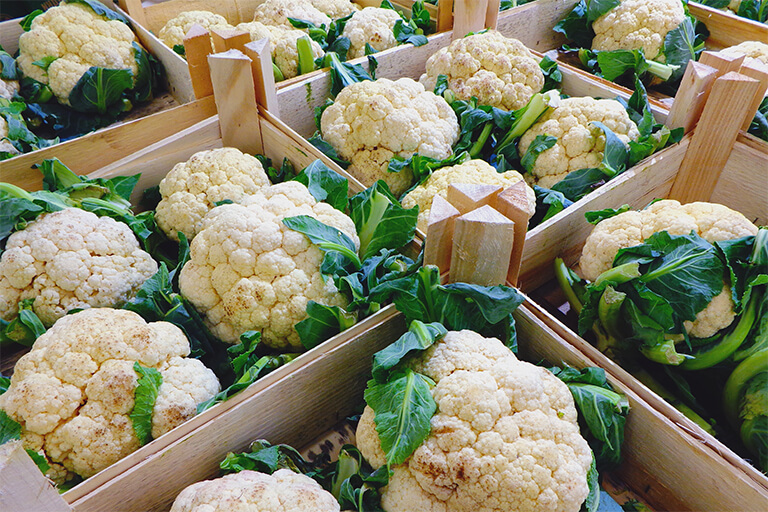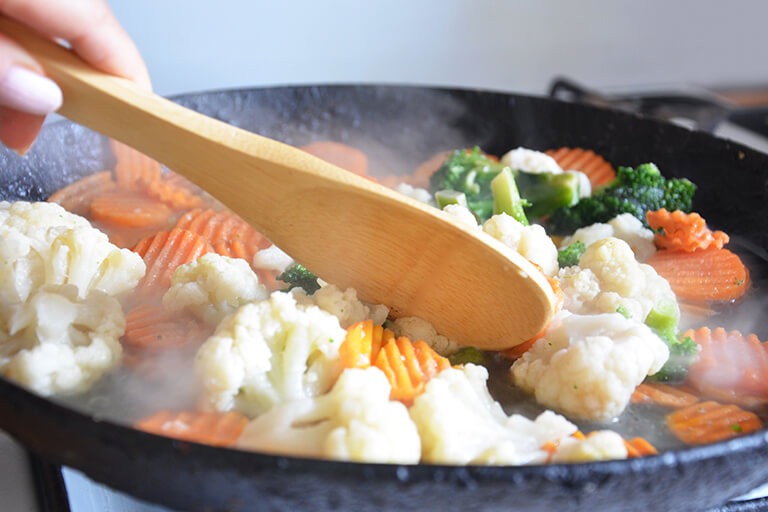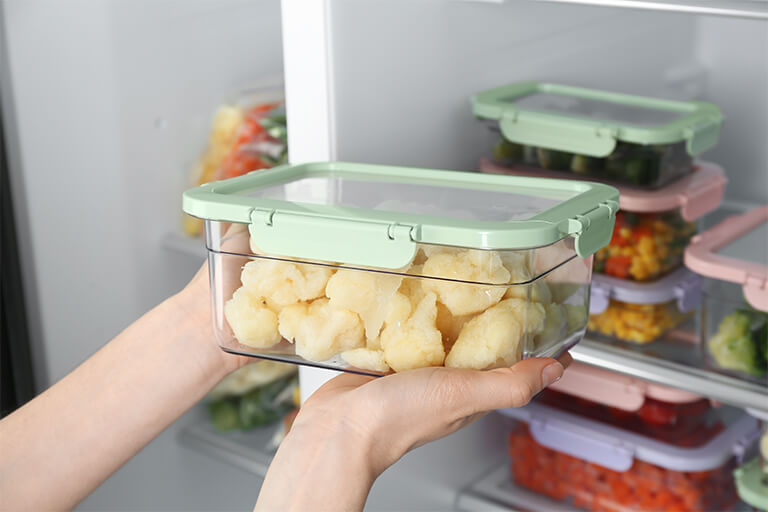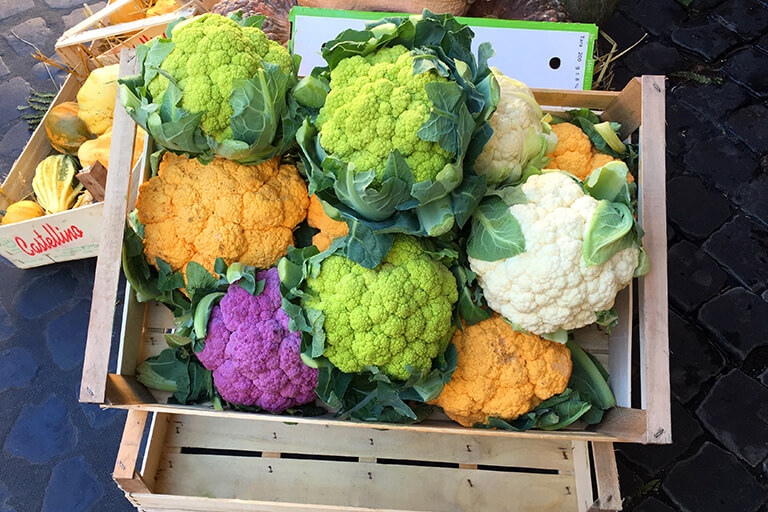The cauliflower is a versatile vegetable that is perhaps best known for its oft-touted wellness properties. It has a great ability to blend into its culinary environment, providing body and bulk in low-carb recipes. The cauliflower’s cool-weather ripening and superior storage abilities make it a fall and winter staple for everything from casseroles to soups or salad, and it’s found a home in surprising places, including pizza crusts!
This vegetable is loaded with vitamins: 1 cup contains about 75% of your recommended daily intake of vitamin C. Try adding a nutritional punch to your dinner by making our faux alfredo sauce with cauliflower. And every part of it, from the stems to leaves, is edible! The florets are the part of the cauliflower most often steamed or roasted (but can also be eaten raw or pickled), but don’t throw out the leaves and stems. These parts of the vegetable are often tossed away, but instead cut down on food waste and save them to add them to homemade vegetable broth!





